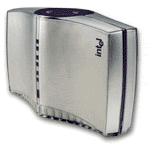Wireless LAN


Does your business want the freedom of Wireless devices? Maybe you have a Wireless LAN and nobody can figure out the problems? Wouldn't it be nice to go into a meeting without the headache of wires all over the conference room floor?
Layer 4 Solutions can get that Wireless LAN up and running in no time!
Businesses can benefit from understanding wireless LANs (WLANs). Compared to wired LANs, wireless systems can be faster to deploy and cheaper to operate. As throughput and interoperability increase and equipment costs decrease—WLANs have become a realistic alternative to wired counterparts.
In small- and home-office markets, residential gateways are leveraging wireless technologies to eliminate costly inside wiring fees, while simplifying shared Internet access deployment in single-family homes and multi-unit dwellings.
In the enterprise market segment, wireless systems are being used to provide untethered LANs in shared spaces—like conference rooms, and hard-to-wire locations—like warehouses. While the gear required to setup these networks becomes increasingly cost-effective and our understanding of the technology deepens, WLANs are a viable alternative to wire-bound office LANs.
Fixed wireless technology is a big part of the emerging Public Access Broadband market, providing temporary high-speed Internet access at hotels, airports, libraries, and convention centers.
How Does it work?
In your basic 802.3 Ethernet LAN (left), Cat5 cable connects LAN stations to a hub. In a wireless LAN, Cat5 cable is replaced by a radio channel, connecting stations to wireless Access Points (APs).
Each wireless station—laptop, desktop, or server—has a radio Network Interface Card (NIC). APs are essentially hubs, outfitted with a radio transceiver, Ethernet uplink, and 802.1d bridging software. Wireless stations transmit to an AP over a shared channel, carved out of the unlicensed 2.4 GHz band.
Approved in 1997, the original IEEE 802.11 standard uses the 2.4 GHz band to provide shared bandwidth at a maximum rate of 1 to 2 Mbps. In 1999, the IEEE approved the 802.11b High Rate (Wi-Fi) amendment, increasing the rate to 11 Mbps. Together, these standards specify WLAN Physical (PHY), Media Access Control (MAC), and Logical Link Control (LLC) layers for fixed wireless broadband access and WLANs.
Contact Layer 4 Solutions for all of your Wireless LAN (WLAN) needs!







